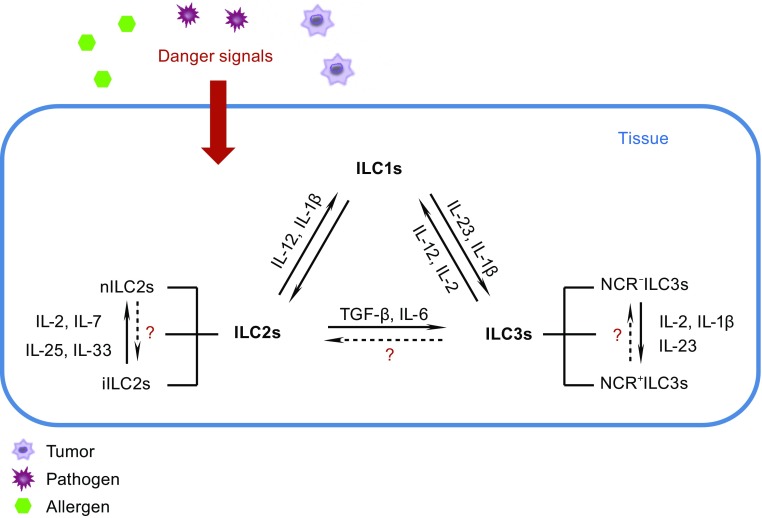Figure 1.
ILC plasticity. ILCs recruit into the lung and become resident in the mucous epithelium. When the tissue is exposed to danger signals elicited by pathogens, allergens or tumor cells, the epithelium or other innate immune cells produce many cytokines. In response to these cytokines, ILCs may alter their phenotype to respond to the environment. IL-2 and IL-12 drive the transformation of ILC3s to ILC1s. ILC1s convert to ILC3s under the influence of IL-1β and IL-23; ILC2s also transform to ILC1s when cultured with IL-12 and IL-1β. Upon increased GATA3 expression, ILC1s gain ILC2s characteristics; when cultured with TGF-β and IL-6, ILC2s become ILC3-like. Whether ILC3s convert into ILC2s is still unclear. In the ILC2 and ILC3 sub-groups, iILC2 cells give rise to cells with nILC2 phenotype when cultured in the presence of IL-2, IL-7, IL-25, and IL-33 in vitro or in vivo. Under the influence of IL-2, IL-1β, and IL-23, NCR−ILC3s express NCR+. The hypothesis that nILC2s convert to iILC2s and NCR+ILC3s convert to NCR−ILC3s should be confirmed in the future. See text for details

